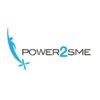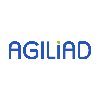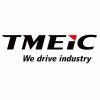Filter interviews by
Renu Electronics Interview Questions and Answers
9 Interview questions
SPI and I2C are both serial communication protocols used for connecting microcontrollers and peripherals.
SPI (Serial Peripheral Interface) uses a master-slave architecture with separate lines for data, clock, and chip select.
I2C (Inter-Integrated Circuit) uses a two-wire interface (SDA for data, SCL for clock) and supports multiple devices on the same bus.
SPI is generally faster than I2C, with speeds up to several...
7QC tools are a set of quality control tools used for process improvement and problem-solving in manufacturing and other industries.
Check sheets: Used to collect and analyze data in a systematic way.
Histograms: Visual representation of data distribution.
Pareto charts: Helps identify the most significant factors contributing to a problem.
Cause-and-effect diagrams: Also known as fishbone diagrams, used to identify r...
8D report is a problem-solving methodology used to identify, correct, and prevent recurring problems in manufacturing or service industries.
8D stands for 8 disciplines, each representing a step in the problem-solving process
It involves identifying the problem, forming a team, implementing temporary and permanent corrective actions, and preventing recurrence
Examples of tools used in 8D reports include fishbone diag...
Colour coding of TH resistors is a system of using coloured bands to indicate the resistance value and tolerance of the resistor.
TH resistors have 4 bands - the first two bands represent the significant digits, the third band represents the multiplier, and the fourth band represents the tolerance.
Each colour corresponds to a number - for example, black is 0, brown is 1, red is 2, etc.
The first two bands determine ...
Yes, I have electronic knowledge.
I have a degree in Electronics Engineering.
I have experience in troubleshooting and repairing electronic devices.
I am familiar with electronic components and their functions.
I have worked with various electronic testing equipment such as oscilloscopes and multimeters.
OOPs pillars are Abstraction, Encapsulation, Inheritance, and Polymorphism. Abstract classes cannot be instantiated while interfaces cannot have method implementations.
Abstraction: Hiding implementation details and showing only necessary information.
Encapsulation: Binding data and methods together to protect data from outside interference.
Inheritance: Creating new classes from existing ones, inheriting properties ...
Bit manipulation involves operations on individual bits of binary numbers.
Bitwise AND, OR, XOR, and NOT operations are commonly used in bit manipulation.
Shifting bits left or right can be used to multiply or divide by powers of 2.
Setting or clearing specific bits using masks is another common technique.
Example: Setting the 3rd bit of a number to 1 - num |= (1 << 3);
Structures in C are user-defined data types that allow for grouping different data types under a single name.
Structures can contain variables of different data types, allowing for more complex data organization.
They are defined using the 'struct' keyword.
Example: struct Person { char name[50]; int age; float salary; };
Individual members of a structure can be accessed using the dot operator (.)
Example: struct Perso...
Data types in C define the type of data that a variable can hold, such as int, float, char, etc.
Basic data types in C include int, float, char, double, and void.
Derived data types in C include arrays, pointers, structures, and unions.
Examples: int num = 10; float price = 25.50; char letter = 'A'; int arr[5];
Renu Electronics Interview Experiences
5 interviews found
(1 Question)
- Q1. Difference between spi and i2c
- Ans.
SPI and I2C are both serial communication protocols used for connecting microcontrollers and peripherals.
SPI (Serial Peripheral Interface) uses a master-slave architecture with separate lines for data, clock, and chip select.
I2C (Inter-Integrated Circuit) uses a two-wire interface (SDA for data, SCL for clock) and supports multiple devices on the same bus.
SPI is generally faster than I2C, with speeds up to several MHz,...
I applied via Referral and was interviewed in Sep 2023. There was 1 interview round.
(4 Questions)
- Q1. Basics of C , MCU
- Q2. Data Types in C
- Ans.
Data types in C define the type of data that a variable can hold, such as int, float, char, etc.
Basic data types in C include int, float, char, double, and void.
Derived data types in C include arrays, pointers, structures, and unions.
Examples: int num = 10; float price = 25.50; char letter = 'A'; int arr[5];
- Q3. Structures in C
- Ans.
Structures in C are user-defined data types that allow for grouping different data types under a single name.
Structures can contain variables of different data types, allowing for more complex data organization.
They are defined using the 'struct' keyword.
Example: struct Person { char name[50]; int age; float salary; };
Individual members of a structure can be accessed using the dot operator (.)
Example: struct Person p1;...
- Q4. Bit manipulation in
- Ans.
Bit manipulation involves operations on individual bits of binary numbers.
Bitwise AND, OR, XOR, and NOT operations are commonly used in bit manipulation.
Shifting bits left or right can be used to multiply or divide by powers of 2.
Setting or clearing specific bits using masks is another common technique.
Example: Setting the 3rd bit of a number to 1 - num |= (1 << 3);
Interview Preparation Tips
Skills evaluated in this interview
I applied via Naukri.com and was interviewed before May 2023. There was 1 interview round.
(4 Questions)
- Q1. Asked very simple basic question
- Q2. Define colour coding of TH resister?
- Ans.
Colour coding of TH resistors is a system of using coloured bands to indicate the resistance value and tolerance of the resistor.
TH resistors have 4 bands - the first two bands represent the significant digits, the third band represents the multiplier, and the fourth band represents the tolerance.
Each colour corresponds to a number - for example, black is 0, brown is 1, red is 2, etc.
The first two bands determine the r...
- Q3. What is 8D report ?
- Ans.
8D report is a problem-solving methodology used to identify, correct, and prevent recurring problems in manufacturing or service industries.
8D stands for 8 disciplines, each representing a step in the problem-solving process
It involves identifying the problem, forming a team, implementing temporary and permanent corrective actions, and preventing recurrence
Examples of tools used in 8D reports include fishbone diagrams,...
- Q4. What is 7QC tools ?
- Ans.
7QC tools are a set of quality control tools used for process improvement and problem-solving in manufacturing and other industries.
Check sheets: Used to collect and analyze data in a systematic way.
Histograms: Visual representation of data distribution.
Pareto charts: Helps identify the most significant factors contributing to a problem.
Cause-and-effect diagrams: Also known as fishbone diagrams, used to identify root c...
Interview Preparation Tips
I applied via Company Website and was interviewed in Feb 2023. There were 4 interview rounds.

(2 Questions)
- Q1. Basics of OOPs and core concept of software development like why winform, advantages, need of .net environment and all
- Q2. Explain the pillars of OOPs. Difference between abstract and interface.
- Ans.
OOPs pillars are Abstraction, Encapsulation, Inheritance, and Polymorphism. Abstract classes cannot be instantiated while interfaces cannot have method implementations.
Abstraction: Hiding implementation details and showing only necessary information.
Encapsulation: Binding data and methods together to protect data from outside interference.
Inheritance: Creating new classes from existing ones, inheriting properties and m...
(1 Question)
- Q1. Coding Logics like array sorting, triangle patterns.
(2 Questions)
- Q1. Salary expectation and Future scope along with company growth.
- Ans.
The salary expectation for a Software Engineer is dependent on experience and skills. Future scope includes career growth and opportunities for advancement within the company.
Salary expectation varies based on factors such as experience, skills, and location.
Software Engineers with in-demand skills like machine learning or cloud computing can command higher salaries.
Future scope includes career growth, opportunities fo...
- Q2. Why you leave your previous company?
- Ans.
Seeking new challenges and growth opportunities.
Desire for career advancement
Lack of learning and growth opportunities
Company culture misalignment
Relocation or personal reasons
Better compensation or benefits
Company downsizing or restructuring
Interview Preparation Tips
I applied via Walk-in and was interviewed in Aug 2022. There were 3 interview rounds.

(2 Questions)
- Q1. How much Payment required ?
- Q2. And how much Payment required?
(1 Question)
- Q1. Have any electronic knowledge?
- Ans.
Yes, I have electronic knowledge.
I have a degree in Electronics Engineering.
I have experience in troubleshooting and repairing electronic devices.
I am familiar with electronic components and their functions.
I have worked with various electronic testing equipment such as oscilloscopes and multimeters.
Interview Preparation Tips
Its good for experience.good for attitude emplement.
Top trending discussions






Interview questions from similar companies

Interview Questionnaire
6 Questions
- Q1. Write net and clean code to print a matrix in spiral order
- Ans.
Print a matrix in spiral order using clean and efficient code
Create four variables to keep track of the boundaries of the matrix
Use a while loop to iterate through the matrix in a spiral order
Print each element as you iterate through the matrix
Update the boundaries of the matrix after each iteration
- Q2. Lot off discussion on project. Lot of questions on python and oops (My project was in Python+django)
- Q3. He asked me a real time question. You have 1 billion sentences and sentence which will be given by user you have to return maximum matching sentence from 1 billion sentences
- Ans.
Find the most similar sentence from a billion sentences based on user input.
Use a text similarity algorithm like cosine similarity or Jaccard index.
Preprocess sentences: tokenize, remove stop words, and stem/lemmatize.
Utilize efficient data structures like tries or inverted indices for fast lookups.
Consider using embeddings (e.g., Word2Vec, BERT) for semantic similarity.
Implement a search algorithm that narrows down ca...
- Q4. Finally he asked me a puzzle which was similar to public private key in cryptography
- Q5. Lot of questions on c++ and java (eg. what is memory leak)
- Q6. It was HR round she asked me simple behavior questions
Interview Preparation Tips
Experience: First Round had 15 questions . It contains 5 English questions (reading comprehension) and 10 aptitude.
Tips: Prepare well aptitude and puzzles.
Duration: 30 minutes
Total Questions: 15
Round: Test
Experience: Second round consist 5 data interpretation questions based on data which was given in question paper.
it was pen paper round.
Duration: 15 minutes
Total Questions: 5
Round: Technical Interview
Experience: The Interview Process started with around 15 candidates. First interview run almost one and half hour .
Tips: Be frank with interviewer and ask him all the test cases whichever you are thinking.
Practice write code on paper.
Prepare well string data structure (eg. Trie , Suffix Tree , Suffix Array).
all the best
Round: Technical Interview
Experience: The Interview Process started with around 8 candidates and 3 of them selected.
Tips: Prepare oops concept and basic concept of c and c++(Memory leak , Garbage memory , Dangling pointer ).
Skills: Coding , Presence of mind
College Name: NIT Jalandhar
Skills evaluated in this interview

I appeared for an interview in Oct 2017.
Interview Questionnaire
4 Questions
- Q1. Since Its been a long time i had inteview, i don't remember the exact questions. Question related to java. Basically Oops Quetsions MultiThreading Some Logical Question
- Q2. About the project you have worked on. Language you specified. Some logical coding question. PHP Question As i specified PHP
- Q3. Question Related to software Engineering like: SDLC Unit Testing Os specific Question Basically the 4th round is totally theoretical.
- Q4. Nothing about your personal life and interest
Interview Preparation Tips
Experience: Aptitude, Reasoning & computer science
General Tips: Good Interview Experience with Power2SME
Skills: Communication, Problem Solving, Analytical Skills

Assistant Manager Interview Questions & Answers
Armstrong Robotics & Technologies Private Limitedposted on 23 Feb 2025
I appeared for an interview in Aug 2024.
(2 Questions)
- Q1. Basics Questions
- Q2. Salary discussion
Interview Preparation Tips

Intern Interview Questions & Answers
Armstrong Robotics & Technologies Private Limitedposted on 6 May 2025
I appeared for an interview in Nov 2024, where I was asked the following questions.
- Q1. What Qualities in Person will help the organisation and person to grow together?
- Ans.
Collaboration, adaptability, and a growth mindset are key qualities that foster mutual growth for individuals and organizations.
Collaboration: Working effectively with others enhances team dynamics. For example, a team member who actively shares ideas can lead to innovative solutions.
Adaptability: Being open to change helps individuals and organizations navigate challenges. For instance, an intern who quickly learns ne...
- Q2. How Can One turn Challenges and difficulties into opportunities Using his Skillset?
- Ans.
Turning challenges into opportunities involves leveraging skills to innovate, adapt, and create solutions in difficult situations.
Identify Skills: Assess your skillset to find strengths that can address specific challenges, such as problem-solving or communication.
Adaptability: Use your ability to adapt to changing circumstances; for example, learning new technologies to overcome project hurdles.
Creative Problem-Solvin...
- Q3. What are the Strengths and weaknesses of working in a team and how to overcome the weaknesses to form a efficient team?
- Ans.
Working in a team enhances collaboration and creativity but can lead to conflicts and communication issues.
Diverse Skill Sets: Teams bring together individuals with different skills and perspectives, leading to innovative solutions. For example, a project team with designers, developers, and marketers can create a more comprehensive product.
Enhanced Problem Solving: Collaboration allows for brainstorming and collective...
Interview Preparation Tips

Software Developer Interview Questions & Answers
Agiliad Technologiesposted on 6 Feb 2023
I applied via Naukri.com and was interviewed in Jan 2023. There was 1 interview round.
(2 Questions)
- Q1. 1. Basic OOP Concepts 2. Difference between structure and class in terms of constructor 3. Can members of structure be defined as private 4. What's lambda function and it's real life use case 5. Difference...
- Q2. 6. What's O(n) in time and space complexity
- Ans.
O(n) refers to linear time and space complexity.
O(n) means that the time or space required by an algorithm grows linearly with the size of the input.
It implies that the algorithm's performance is directly proportional to the input size.
For example, if an algorithm takes 10 seconds to process 100 elements, it would take 20 seconds to process 200 elements.
O(n) complexity is considered efficient and desirable in most case...
Interview Preparation Tips
Skills evaluated in this interview
Renu Electronics Interview FAQs
Tell us how to improve this page.
Renu Electronics Interviews By Designations
Interview Questions for Popular Designations
Overall Interview Experience Rating
based on 8 interview experiences
Difficulty level
Duration
Interview Questions from Similar Companies
Renu Electronics Reviews and Ratings
based on 100 reviews
Rating in categories
|
Embedded Engineer
21
salaries
| ₹3 L/yr - ₹4 L/yr |
|
Software Engineer
19
salaries
| ₹3 L/yr - ₹4.8 L/yr |
|
Applications Engineer
12
salaries
| ₹3.6 L/yr - ₹6 L/yr |
|
Quality Engineer
9
salaries
| ₹1.5 L/yr - ₹5.3 L/yr |
|
Senior Sales Engineer
7
salaries
| ₹6.5 L/yr - ₹8.5 L/yr |

TMEIC

Agiliad Technologies

Marine Electricals

Armstrong Robotics & Technologies Private Limited
- Home >
- Interviews >
- Renu Electronics Interview Questions












